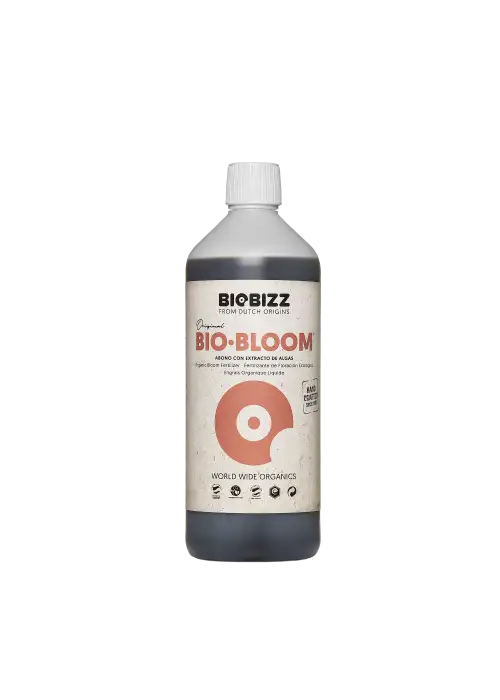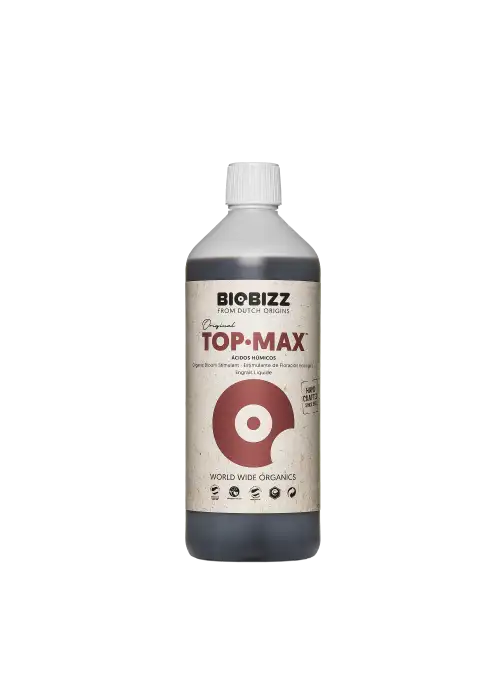By continuing to use the website or clicking Accept you consent to our cookies and personal data policy and confirm that you are at least 18 year old. For details please see Privacy Policy and Terms
Accept
RQ HONEY CREAM
Soil
Custom
Outdoor
Room Type
LST
weeks 6
Topping
weeks 6
Main-Lining
weeks 6
1 liters
Pot Size
Start at 6 Week
1
Week 1. Vegetation5y ago
6 cm
Height
12 hrs
Light Schedule
22 °C
Day Air Temp
5.0
pH
No Smell
Smell
25 °C
Night Air Temp
0.5 liters
Pot Size
Nutrients 1

Root-Juice
0.5 mll
99problems 4/16: Put seed into ground (.5 lt pot)
4/19: Day 1
4/24: BIOBIZZ Root-Juice (1ml)
4 likes
comments
Share
2
Week 2. Vegetation5y ago
10 cm
Height
12 hrs
Light Schedule
22 °C
Day Air Temp
5.0
pH
No Smell
Smell
60 %
Air Humidity
22 °C
Night Air Temp
0.5 liters
Pot Size
1 liters
Watering Volume
Nutrients 1

Root-Juice
2 mll
99problems 4/26: Beginning of week 2 (Plant is 7 days old)
4/28: Day 9
4/29: Day 10
4/30: Day 11- Root-juice (2ml/lt)
5/1: Day 12
5/2: Day 13
5/3: Day 14
3 likes
5 comments
Share
3
Week 3. Vegetation5y ago
10 cm
Height
12 hrs
Light Schedule
22 °C
Day Air Temp
5.0
pH
No Smell
Smell
60 %
Air Humidity
22 °C
Night Air Temp
0.5 liters
Pot Size
0.5 liters
Watering Volume
Nutrients 1

Bio-Heaven
2 mll
99problems day 16:
> I moved the plant from a 0.5 lt pot into an 11lt one.
- Fortunately no roots damage was caused during this process.
- It didn't affect nor slowed the plant's growth process.
5 likes
2 comments
Share
4
Week 4. Vegetation5y ago
10 cm
Height
12 hrs
Light Schedule
22 °C
Day Air Temp
5.0
pH
No Smell
Smell
60 %
Air Humidity
22 °C
Night Air Temp
0.5 liters
Pot Size
0.5 liters
Watering Volume
Nutrients 3

Bio-Heaven
2 mll

Bio-Bloom
1 mll

Top-Max
1 mll
3 likes
1 comment
Share
5
Week 5. Vegetation5y ago
10 cm
Height
12 hrs
Light Schedule
22 °C
Day Air Temp
5.0
pH
No Smell
Smell
60 %
Air Humidity
22 °C
Night Air Temp
0.5 liters
Pot Size
0.5 liters
Watering Volume
Nutrients 4

Bio-Heaven
3 mll

Bio-Bloom
2 mll

Top-Max
1 mll
1 like
comments
Share
Grow Questions
99problemsstarted grow question 5y ago
I saw that most people use the LST/mainlining technique on this specific strain, is there anybody out there willing to help me with the process? I couldn't find anything helpful on the internet and I don't wanna kill my plant lol.
Open
Techniques. Main-lining
likes
Answer
Shagrathanswered grow question 5y ago
You can hit me with a PM, I can help you through it while you grow!
likes
Complain
NobodysBudsanswered grow question 5y ago
try to support lower trunk while you bend so you don't agitate the roots...
I forgot -- You want an "anchor" around lowest portion of trunk below your bend.. that will help hold it in place and not stress the roots. it should be exact opposite side of where you bent the plant.
so, as you bend down, that anchor holds the lowest portion of stem in place.
I like staples in fabric, because it's not too strong.. if the plant grows out and you forget, it'll rip the staple out before it damages the plant.
Later in bloom you may need to remove these tie-downs, if they ar stil there. I'd hold off until week 2-3 of bloom before removing the upper tie-down holding top of plant down...
otherwise, significant shift in shape will occur and your once even canopy will now be uneven.
The lower anchor may be best ro remove before you see any extreme pulling on the side of put - mostly due to increased thickness of the trunk. you dont' want anything to grow into the plant or cause weird growth around the tie-down.
likes
Complain
MadeInGermanyanswered grow question 5y ago
Low stress training, or LST, simply means bending and tying the plants to train them in a form that grows more efficiently. Typical highly stressful techniques such as topping, fimming and supercropping all fall under the category of circumcision to increase yield and are not part of LST. All three are discussed in detail with a special attachment guide. Our focus here is more on training cannabis plants than cutting off parts. LST can of course also be combined with the techniques for maximum yields, especially with topping and the ScrOG method. In this guide to cannabis growing, we will simply explain the LST for you, but also how to combine LST with other techniques for maximum yields.
It is always best to start the LST on flexible plants that are still growing. The stem and shoots tend to become harder and develop a thicker bark as the flowering progresses. That makes the LST risky. However, hopeless situations sometimes require the most determined way out. LST is the preferred last resort. It is better to bend the thickest flowers away from the grow lamp than to risk being burned by the light in late bloom. But be careful, because LST after the first three weeks of flowering can often end in a break, because it ends in a bend. But don't panic if you actually break a branch. Bandage the wound with tape. Most growers who plan to use LST to increase yields start early. US growers prefer the 4-way LST method. This requires cutting off the top of young plants and then tying down the 2 new and the 2 lower side shoots until the whole ultimately forms a cannabis bush. This is a mixture of topping and LST, which can later be woven into a ScrOG. However, an extended growth phase is required to enable this mix of methods.
The more European LST style is pure LST without snapping off. European growers prefer to allow the plants at least 2-3 weeks of undisturbed growth before putting their hand on the cannabis plants. No cutting off of the tips and no topping with scissors. Instead, the main stem is treated the same as the side shoots by tying them down to fill the remaining side space with branches. Some additional time in the growth phase could be necessary for this. However, the plants will recover faster than if they are pruned. This type of LST is preferred by growers who grow autoflowering cannabis and want to increase their yields without long recovery times.
To successfully use LST on your marijuana, you need a few simple tools, a steady hand and patience. Let's start with the tools necessary for LST. You will need some soft garden wire or a pack of plant ties or a roll of hemp twine. Yes, you really don't need much for cannabis LST. Cable ties and cords are quite old school and can cut into the stems if they are tied too tight. We therefore recommend soft plant binders or soft garden wire, especially for beginners. If you are particularly clumsy, support your cannabis with bamboo and tie the tied-down parts to the post with soft wire. Before you start with the LST, you also have to prepare your pots. Drill a few holes in the top of the pots or containers. Next, bend the still flexible fresh shoots with the soft wire. Finally, run the wire through a hole in the pot to hold the tied-down shoot in place - your LST is ready. Do the same with the surrounding shoots. Continue with the LST until you are satisfied with the size of your grass bush. By attaching all of the tied branches to the pot, the grower can still pick up and move his cannabis plants without having to undo the LST. Autoflowering growers don't have that much time to mess around. Although early LST on larger super cars can do wonders in just a few weeks. Further care is necessary in the development of the plants. More specifically, the additional new growth also wants to be tied down and tied down. LST cannabis growers want to be carefully monitored. The grower must control vertical growth and promote lateral growth in order to promote a dense plant roof of the cannabis bushes.
likes
Complain
6
Week 6. Vegetation5y ago
10 cm
Height
12 hrs
Light Schedule
22 °C
Day Air Temp
5.0
pH
No Smell
Smell
60 %
Air Humidity
22 °C
Night Air Temp
0.5 liters
Pot Size
0.5 liters
Watering Volume
Nutrients 4

Bio-Heaven
3 mll

Bio-Bloom
2 mll

Top-Max
1 mll
99problems Topped the plant at the 3rd nod and then applied the Main-lining technique.
- tiding/bend down some of the leaves
- LST technique
2 likes
3 comments
Share
Used techniques
LST
Technique
Topping
Technique
Main-Lining
Technique
Enjoying this diary? Follow for more updates!
Prefer the old Diary view?
Go back to the old Diary view







































